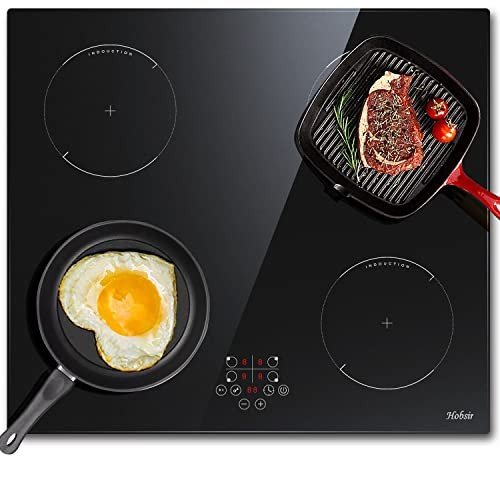13 Things About Hobs And Ovens You May Not Have Known
Understanding Hobs and Ovens: A Comprehensive Guide for Cooking Enthusiasts
The kitchen is frequently concerned as the heart of the home, where cooking creations come to life. 2 important components of any kitchen are the hob and the oven. While Hobs Sale are both crucial for cooking and cooking, lots of house owners may not fully comprehend the differences, functionalities, and numerous types offered in the market today. In this post, we will check out these appliances in information, assisting you make informed choices for your cooking needs.
Tabulation
- What is a Hob?
- 1.1 Types of Hobs
- 1.2 Benefits of Different Hob Types
- What is an Oven?
- 2.1 Types of Ovens
- 2.2 Benefits of Different Oven Types
- Picking the Right Hob and Oven for Your Kitchen
- Regularly Asked Questions (FAQs)
- Conclusion
What is a Hob?
A hob, commonly called a cooktop, is a cooking surface area that you place pots and pans on to prepare food. It includes a variety of heating components and is frequently installed on counter tops. In modern-day kitchens, hobs are available in numerous styles, technologies, and performances.
1.1 Types of Hobs
There are numerous types of hobs readily available in the market:
Type
Description
Gas Hob
Uses gas burners for cooking, offering precise temperature level control.
Electric Hob
Operates utilizing electrical heating elements, commonly seen in solid or glowing kinds.
Induction Hob
Utilizes magnetic fields to heat pots and pans straight, promoting energy performance.
Ceramic Hob
Features a smooth glass top, making use of electric coils underneath the surface area.
Strong Plate Hob
Traditional electric hobs with exposed metal plates that warm up.
1.2 Benefits of Different Hob Types
Gas Hobs:
- Quick heating & cooling.
- Visual flame control for exact cooking.
Electric Hobs:
- Even heating; suitable for simmering and boiling.
- Easy to clean, specifically flat surfaces.
Induction Hobs:
- Energy-efficient as only the pot heats up.
- Security functions, such as automated shut-off.
Ceramic Hobs:
- Attractive aesthetic appeals with a smooth finish.
- Even surface areas for simple cleansing.
Solid Plate Hobs:
- Cost-effective and durable.
- Excellent for fundamental cooking requirements.
What is an Oven?
An oven is a kitchen device utilized for baking, roasting, and broiling food. Ovens can be standalone systems or built into kitchen cabinetry, supplying different cooking techniques that can boost or transform ingredients.
2.1 Types of Ovens
Comparable to hobs, there are several kinds of ovens, each with its benefits:
Type
Description
Traditional Oven
Operates with heating elements, perfect for baking.
Convection Oven
Uses fans to circulate hot air, cooking food evenly and rapidly.
Microwave Oven
Cooks food using electromagnetic radiation; perfect for reheating.
Steam Oven
Makes use of steam to cook food, protecting moisture and nutrients.
Wall Oven
Built into the wall, using benefit and visual appeal.
2.2 Benefits of Different Oven Types
Standard Ovens:
- Simple to utilize without any complex settings.
- Versatile for various cooking methods.
Convection Ovens:
- Faster cooking times due to air circulation.
- Enhanced browning and crisping for baked products.
Microwave Ovens:
- Quick cooking or reheating of food.
- Energy-efficient for low-volume cooking.
Steam Ovens:
- Health-conscious cooking that maintains nutrients.
- Excellent for baking bread and cooking veggies.
Wall Ovens:
- Convenient positioning; conserves area.
- Less bending required to gain access to cooking meals.
Selecting the Right Hob and Oven for Your Kitchen
When picking a hob and oven, factors such as area, cooking design, and personal preferences should be considered. Here's a simple guide to assist you pick:
Factors to Consider
- Cooking Needs: Evaluate your cooking habits. Do you typically bake, or is stovetop cooking more common?
- Space Availability: Measure your readily available kitchen area. Some hobs or ovens might need more room than others.
- Fuel Type: Decide in between gas and electric, based upon availability and personal preferences.
- Budget: Determine what you're prepared to spend and discover alternatives within that variety.
Quick Tips
- Prioritize Efficiency: Look for energy-efficient models to lower long-term expenses.
- Read Reviews: Explore user reviews to gather viewpoints on efficiency and reliability.
- Seek advice from Professionals: Seek suggestions from kitchen design professionals when preparing your layout.
Frequently Asked Questions (FAQs)
1. What is the distinction in between a hob and an oven?
A hob is a cooking surface area usually for stovetop cooking, while an oven is an enclosed space utilized for baking, roasting, and broiling food.
2. Can I use any pot on an induction hob?
No, induction hobs require magnetic pots and pans. Stainless-steel and cast iron pots work, but non-magnetic products like aluminum will not.
3. How do convection ovens vary from conventional ovens?
Convection ovens utilize fans to circulate hot air for even cooking, whereas traditional ovens do not have this function.
4. Is it possible to have both a hob and oven as a single system?
Yes, there are variety cookers that incorporate a hob and an oven within one device, using a comprehensive cooking solution.
5. How do I tidy my hob and oven?
Most hobs and ovens have recommended cleansing methods depending upon their materials. Ovens Online is suggested to seek advice from the maker's guidelines for the best practices.
Comprehending the differences in between hobs and ovens is essential for anybody wanting to enhance their kitchen space or improve their cooking skills. By understanding the various types, their benefits, and how to select the right ones for your requirements, cooking can become a more satisfying and effective experience. Whether you are an experienced chef or a newbie cook, the ideal mix of hob and oven can elevate your cooking productions to brand-new heights.
